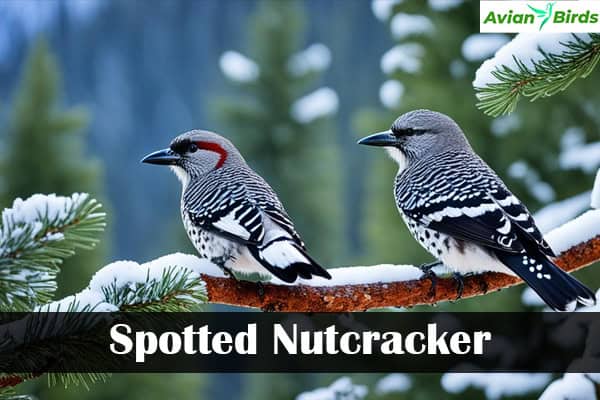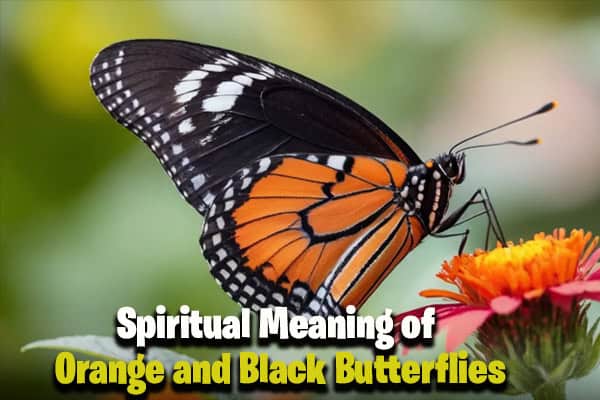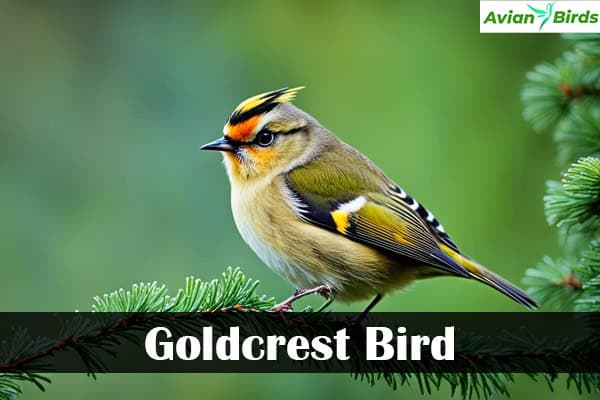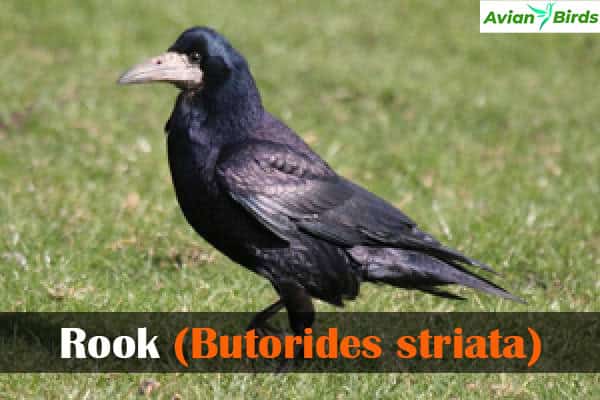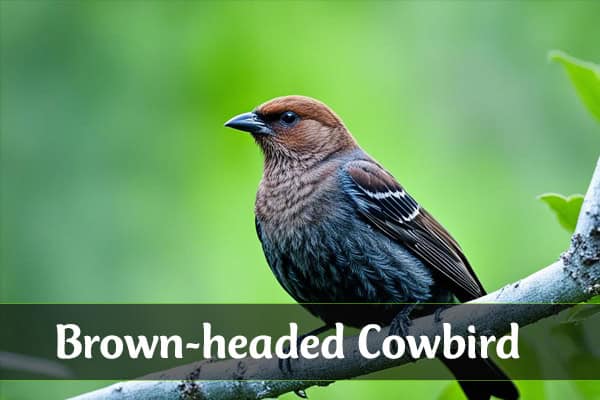Spotted Nutcracker a Stunning Bird (ID Guide With Pictures)
We’re excited to share with you the spotted nutcracker, a fascinating bird of the Northern Hemisphere’s pine forests. These birds stand out with their black-and-white look and unique markings. They’re not just a pleasure to watch; they’re crucial to their alpine homes.
The spotted nutcracker is part of the Picidae family, like the well-known woodpeckers of North America. It has a strong bill and special ways of eating. This makes it a key species in the pine forests it lives in.
~Here we’ll learn about the Spotted Nutcracker~
The spotted nutcracker is a stunning bird in the North American woodpecker family. It’s known for its eye-catching black-and-white look and unique barred patterns. Also, This big bird, about the size of a Eurasian jay, is a sight to see as it flies through pine forests.
Fun Facts About Spotted Nutcracker
- Scientific name: Nucifraga caryocatactes
- Weight: 160 – 250 grams
- Length: 32 – 33 cm
- Wingspan: 49 – 53 cm
- Lifespan: Up to 16 years
- Diet: Hazelnuts and seeds from Swiss stone pine trees
- Habitat: Coniferous forests
1. Appearance
This bird has a long, heavy bill and a white-flecked face. It also sports a bold black cap. The spotted nutcracker stands out in the region’s bird world.
Its look changes depending on where it lives. Northern birds have more spots, while southern ones have a rich chocolate-brown back and sides. But all have a short tail, a white vent, and white tail markings that show when they fly.

The spotted nutcracker’s black-and-white look, big size, and strong bill make it a symbol of the North American woodpeckers. Learning about its unique traits and behaviors helps us appreciate nature’s diversity and beauty.
2. Natural Habitat
The spotted nutcracker is a bird that lives in the forests of North America. It loves the coniferous and mixed forests, from the lowlands to the high mountains. These birds adapt well to the changing landscapes of their homes.
In the coniferous forests, they find food in the tall pines and firs. They collect pine nuts and store them for winter. In the mixed forests, they blend in with the trees and plants, making them hard to spot.
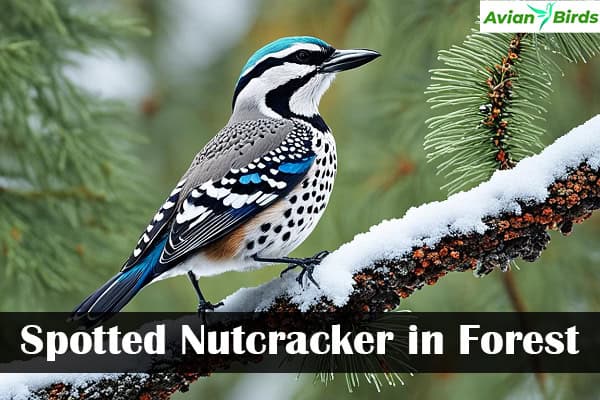
As we go up to the montane forests, the spotted nutcracker is still there. These high places with tough terrain and cold air are perfect for them. They can survive in these tough conditions, even with the changing climate and habitats.
The spotted nutcracker can live in many types of forests, showing how adaptable it is. It plays a big part in keeping the forests healthy. As we learn more about this bird, we’ll see how it finds food and lives in its forest home.
| Habitat Type | Elevation Range | Key Characteristics |
|---|---|---|
| Coniferous Forests | Lowlands to Subalpine | Dominated by evergreen trees like pines, firs, and spruces |
| Mixed Forests | Lowlands to Montane | Combination of coniferous and deciduous trees |
| Montane Forests | Subalpine to Alpine | Rugged terrain, cooler temperatures, and higher elevations |
3. Foraging Habits and Food Sources
The spotted nutcracker is a pro at finding food in the alpine mountains. It loves to eat the rich pine nuts from the Swiss pine, also known as the Stone pine or Arolla pine. These seeds are full of nutrients and give the birds lots of energy, similar to hazelnuts and acorns.
The Swiss pine seeds need the spotted nutcracker to spread and grow. The bird remembers where it finds these seeds and stores them for winter. This helps the Swiss pine and the spotted nutcracker live together in harmony.
The Importance of Pine Nuts
Pine nuts from the Swiss pine are key to the spotted nutcracker’s diet. They give the bird the energy it needs to survive in the tough alpine world. These nuts are crucial, especially in winter when food is hard to find.
| Nutrient | Pine Nuts (per 100g) | Hazelnuts (per 100g) | Acorns (per 100g) |
|---|---|---|---|
| Energy (kcal) | 673 | 628 | 209 |
| Protein (g) | 13.9 | 15.0 | 5.2 |
| Fat (g) | 68.4 | 60.8 | 12.1 |
| Carbohydrates (g) | 3.7 | 4.7 | 41.3 |
The spotted nutcracker’s love for pine nuts shows how important these relationships are in alpine forests. By learning about this bird’s eating habits, we can see how these ecosystems work together.
Learning about the spotted nutcracker’s role in the forest helps us value the balance in these ecosystems. Keeping this bird safe is key to the health of the Swiss pine forests and all the animals they support.
4. Breeding and Nesting Behaviors
The spotted nutcracker is a bird that lives in the high mountains. It has interesting ways of breeding and nesting. During the breeding season, these birds use sounds and ways of talking to each other. This helps them with finding a mate and making more birds.
5. Vocalizations and Communication
The spotted nutcracker makes different sounds, like loud rasps and soft murmurs. They even copy other birds’ sounds. These sounds are key for talking to each other. They talk about their territory, finding a mate, and other important things.

Not much is known about how these birds breed and nest yet. But, they seem to be like other corvids. They build complex nests and care for their young in the pine forests. This is important for the forest’s health.
The spotted nutcracker’s sounds, breeding, and nesting ways are fascinating. They show us how these high mountain birds adapt and behave. This makes them interesting to scientists and nature lovers.
~Spotting the Spotted Nutcracker~
Birdwatchers and nature lovers can see the spotted nutcracker in alpine and subalpine forests. It’s easy to spot because of its size, unique look, and flight pattern. This makes it great for beginners.
The spotted nutcracker stands out with its black-and-white feathers and long bill. It’s big and strong, unlike other birds in the area. Watching it search for pine nuts or fly through the trees shows its important role in the forest.
To see the spotted nutcracker, learn about where it lives and what it does. Knowing about its special traits and role helps us enjoy birdwatching more. It also helps protect these amazing birds.
For birdwatchers or nature fans, looking for the spotted nutcracker makes outdoor trips more exciting. By paying attention to this bird and its home, we learn about the rich bird life in alpine areas.
Recommended Articles
Wrapping Up…
The spotted nutcracker is a fascinating bird that lives in North America’s alpine and subalpine pine forests. It has special adaptations and behaviors that help it survive and thrive. This bird is key to keeping the mountain ecosystems healthy and alive.
This bird’s looks, how it finds food, and where it builds its nest are all connected to the pine forests. Its unique features and skills let it live well in the tough alpine world. Plus, it spreads pine seeds, which helps the forests grow and stay healthy.
Now, we know how important it is to save the spotted nutcracker and its home. We need to spread the word about this special bird and help protect its forests. By working together, we can make sure the spotted nutcracker keeps flying in the mountains for a long time. Let’s celebrate this bird and keep the alpine ecosystems safe for it.

